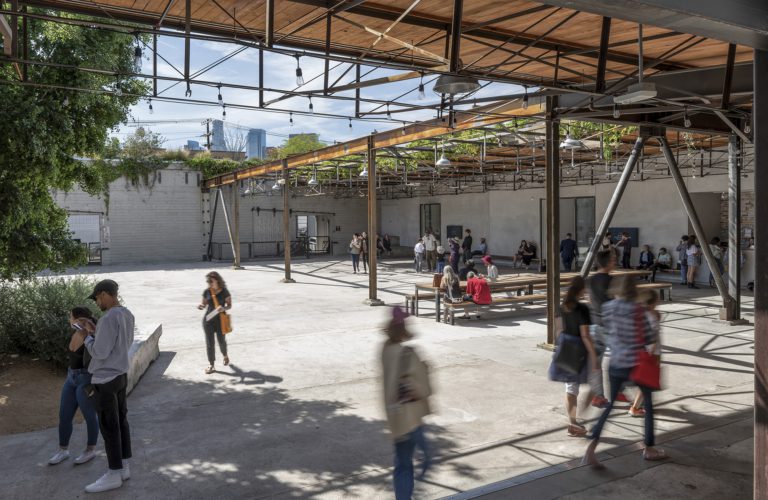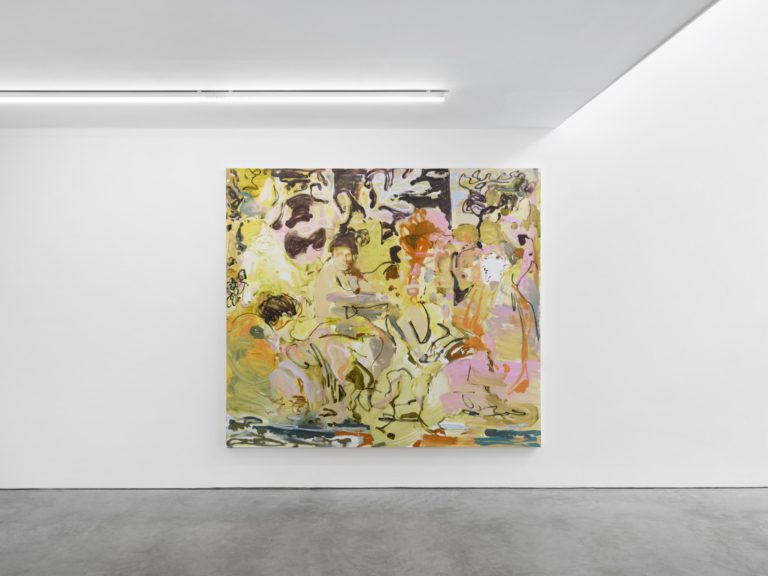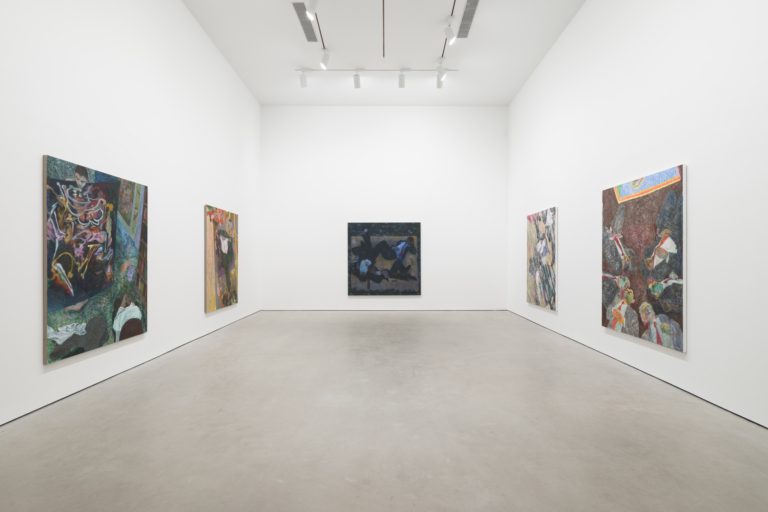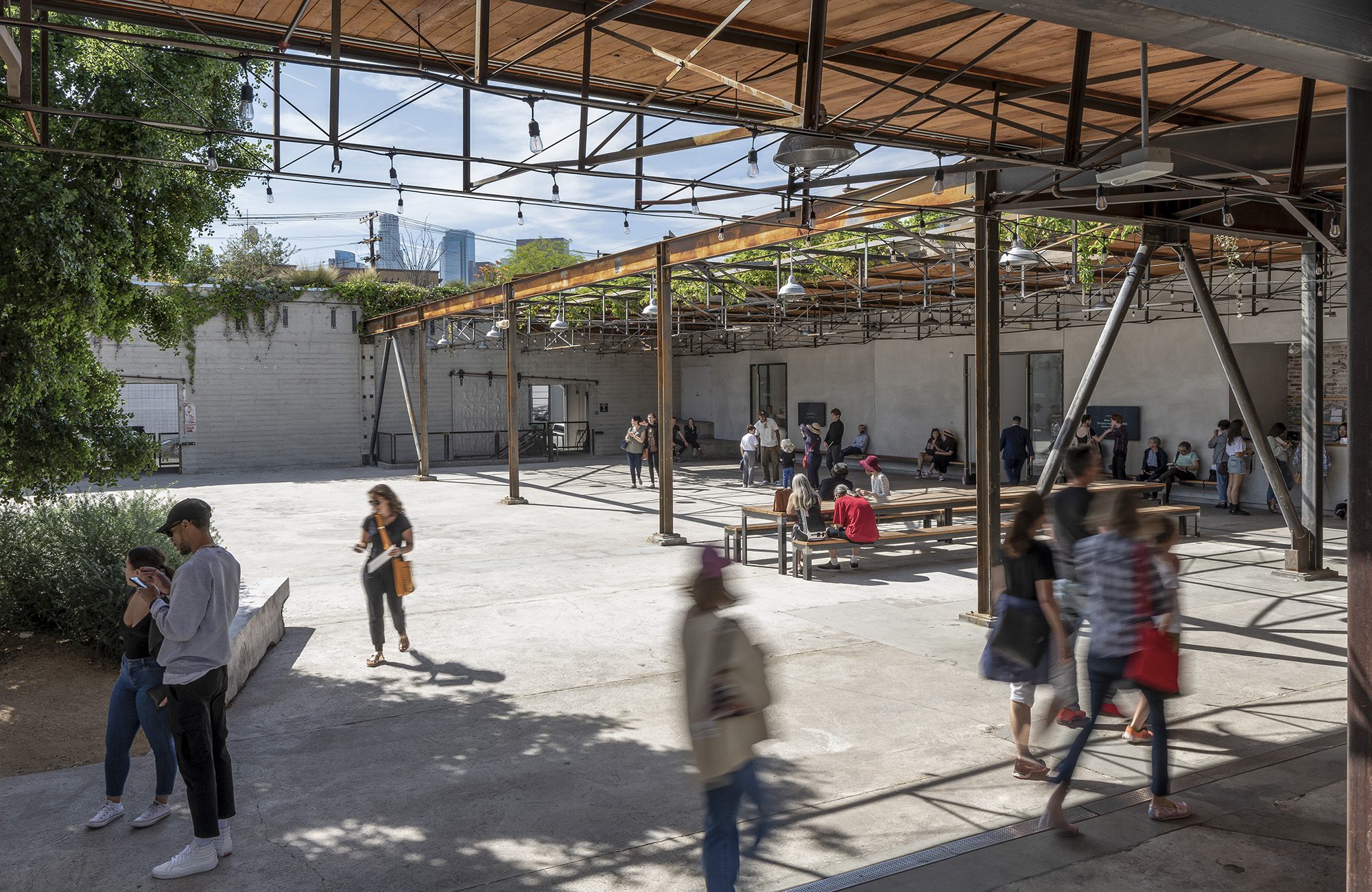
Hauser & Wirth Downtown Los Angeles, 2019. Photo by Elon Schoenholz. Courtesy Hauser & Wirth.
Founded in 2011 as an artist-led project, Cob has evolved to become a stalwart of London’s contemporary art scene, representing artists including Faye Wei Wei and Tomo Campbell. Over the past decade, founder Victoria Williams has leveraged the digital art space to connect with and gauge the interests of collectors worldwide—stamping Cob’s presence on the global stage.
An Artsy veteran, Williams has nearly a decade of experience on the platform, which has given Cob access to a world of interested collectors. In recent years, the gallery has seen a surge in interest from the Asian continent.
“The reach is incredible.…I’m seeing a lot more in the Asian market as well, which is really great,” she said. This is especially useful, in her words, because “it can be, not always, an early indicator of the level of interest you may receive at an art fair—which, in terms of preparation, can be a useful tool.”

Installation View of Tomo Campbell, Spitting Feathers, 2023. Courtesy of the artist and Cob Gallery.
Likewise, C L E A R I N G in New York has found Artsy to be particularly useful for engaging with collectors in regions outside of the gallery’s immediate vicinity, according to director John Utterson. For instance, Utterson shared that the buzzy gallery opened an exhibition of Kené textile paintings by the Shipibo-Conibo artist Sara Flores at its Nolita gallery in September 2023, leading to a surge of interest from new collectors based in Latin America.
“Artsy is a particularly effective tool for disseminating information to a diverse and engaged audience, while also enabling galleries…to establish and nurture new relationships with individual collectors the world over,” said Utterson. “Especially those who tend to do most of their business on the move.”
Artsy also offers galleries an accessible channel to engage newcomers. For Hauser & Wirth’s Los Angeles director Katharine Abrams, Artsy provides the gallery a set of tools to nurture relationships with collectors in an approachable way.
“Artsy helps to dissolve the barrier to entry that many new collectors can feel when approaching a gallery for the first time,” Abrams said. “I’m a big proponent of de-mystifying the idea that galleries are unapproachable, whether in person or online. It also helps connect us to collectors in regions where Hauser & Wirth does not have a physical location; it brings the work to their front door and, in turn, expands the gallery’s reach globally.”
“Artsy is a particularly effective tool for disseminating information to a diverse and engaged audience, while also enabling galleries…to establish and nurture new relationships with individual collectors the world over,”
John Utterson, C L E A R I N G
Abrams recounted how a client reached out to the gallery on Artsy during the pandemic’s peak in 2020 to inquire about a drawing. Through initial discussions focused on several artists, they quickly developed a strong relationship that evolved over the following years. The client has since purchased several drawings and last year acquired a “significant” painting.

Installation View of Henry Curchod, Market correction, 2023. Courtesy of the artist and C L E A R I N G.
Meanwhile, Martine Ma, a sales assistant at C L E A R I N G, elaborated on the impact that Artsy has on uncovering new sources of demand for their artists. “Artsy enables galleries to increase their visibility across a broad range of collectors,” said Ma. This expanded view provides galleries with valuable insights to refine their programming and strategies for collector outreach.
“I’ve found that it can help us to optimize certain areas that we may have overlooked or been unaware of, such as demand for a particular artist’s work from regional audiences…it affords us the opportunity to reflect on our program and gallery from a variety of perspectives,” she added.
In fact, C L E A R I N G’s first inquiry on Artsy turned into a sale after the collector found a painting posted on the gallery’s Artsy page. Ma recounted how the artwork captivated the buyer to such an extent that they traveled to New York City specifically to view it and purchased it immediately. This success story, in her words, was regarded as a very reliable method to generate interest in the gallery’s roster. “Maybe it was by happenstance (and/or a brilliant algorithm), but we certainly took it to be a very auspicious sign,” Ma added.
“I’ve found that it can help us to optimize certain areas that we may have overlooked or been unaware of, such as demand for a particular artist’s work from regional audiences…it affords us the opportunity to reflect on our program and gallery from a variety of perspectives,”
Katharine Abrams, Hauser & Wirth

Hauser & Wirth Downtown Los Angeles, 2019. Photo by Elon Schoenholz. Courtesy Hauser & Wirth.
At Cob, Williams and director Cassie Beadle emphasize both the longevity of their Artsy-originating relationships, and the ability of Artsy’s platform to foster them. They noted that some of their collectors prefer to correspond on Artsy, attributing it to “the safety of the Artsy interface.”
Additionally, Artsy’s archival features allow previous shows and fair booth listings to remain accessible and engaging, ensuring that presentations continue to attract attention and potential buyers long after their conclusion. This January, Williams and Beadle were approached by an American client about a photography show that the gallery had initially presented in 2021. The collector purchased two “big” pieces from the show nearly three years later. For them, it emphasized the platform’s ability to maintain and even rejuvenate interest in a gallery’s offerings over time.

Installation View of Tomo Campbell, Spitting Feathers, 2023. Courtesy of the artist and Cob Gallery.
Beadle and Williams refer to these unanticipated transactions, much like the one described by Ma, as “surprising Artsy sales.” This term encapsulates the remarkable and often unforeseen successes Artsy’s digital platform facilitates. Such instances underscore the ease and ability of galleries to develop new leads—transforming their backlog into an active collector outreach strategy.
These “surprising sales” and collector-gallery connections—across Cob, C L E A R I N G, and Hauser & Wirth—are not only indicative of Artsy’s efficacy in matching artworks with the right collectors at all levels; it also highlights the potential of art acquisition in the digital age, where a gallery can generate promising leads for new collectors via virtual channels.



